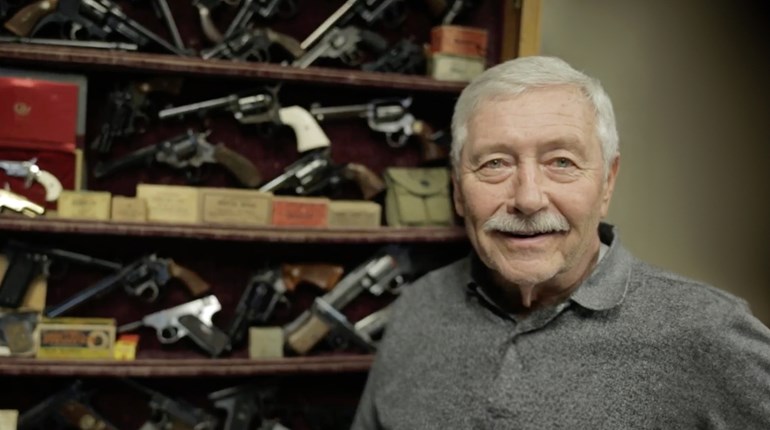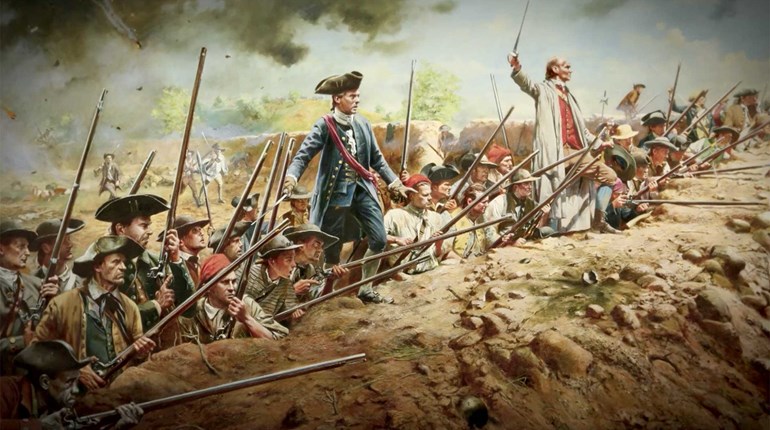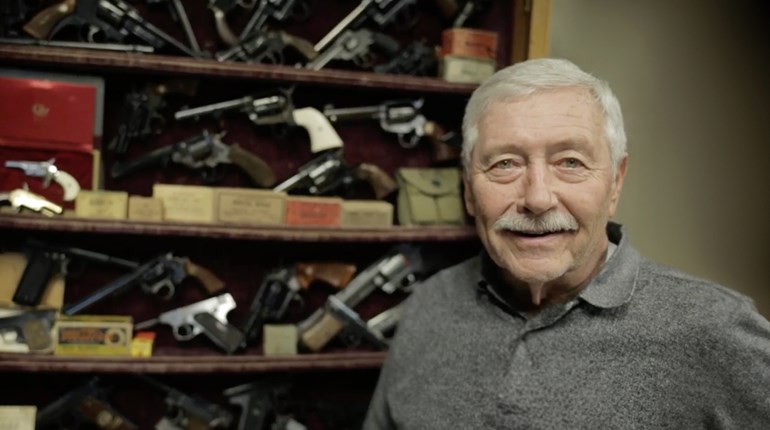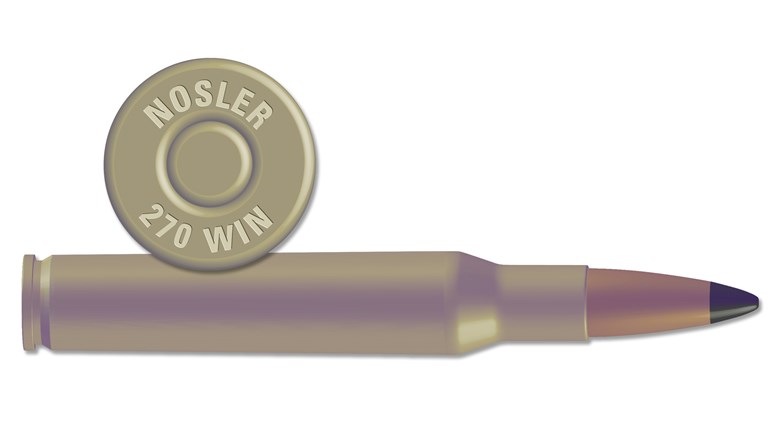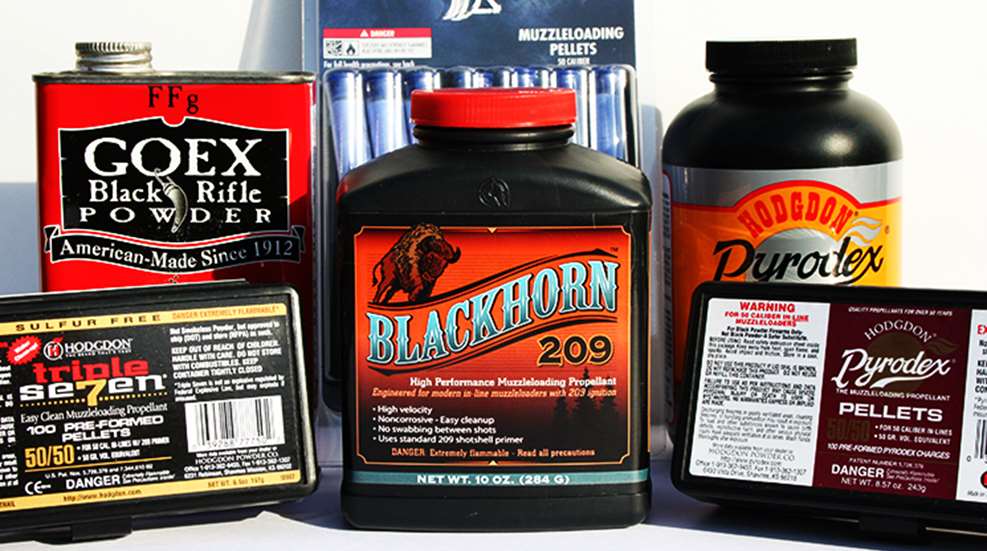
Muzzleloaders, like firearms, benefit greatly from load experimentation. That doesn’t mean you’re weighing charges to 1/10-grain accuracy on a digital powder scale. Rather, it implores that you shouldn’t be satiated with the generic, 100-grain/vol. load consisting of two .50 caliber, 50-grain/vol. black powder substitute pellets. The prudent choice is to “work up” loads incrementally, as well as tryout “new-for-you” propellants. Until you do, you’ll never know what your muzzleloader is truly capable of. So, what’s the best option for you and your muzzleloader? Read on.
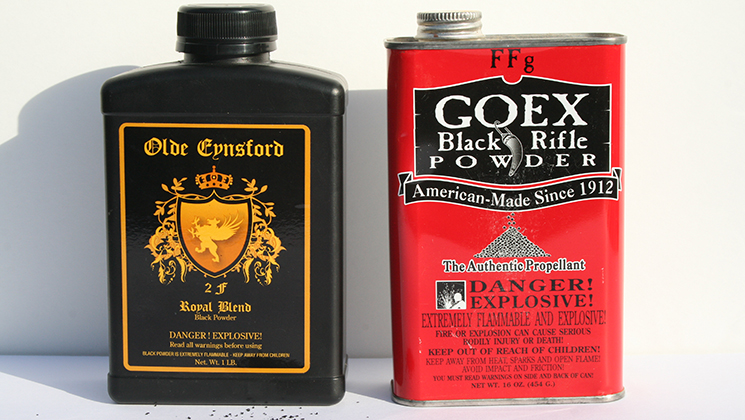
Black Powder
A staple for traditionalists, authentic black powder is an option for the modern muzzleloader hunter, too. Thanks to its simple, albeit sensitive, composition consisting of charcoal, potassium nitrate and sulfur, true black powder is easily ignited, which is why—in its FFFFg size—it’s used for priming flintlocks’ pans. That last ingredient, however, is the reason that black powder produces its infamous “rotten egg” smell (once fired). Black powder is hygroscopic, meaning it will absorb moisture from the air if exposed to it. As such, it’s not the best choice for humid environs or wet conditions. Concerning its sensitivity, black powder is classified as an “explosive,” hence the reason you don’t find it on the shelves of big-box stores or smaller gun shops. It can be easily and inexpensively ordered online, though.
When uniformly measured (volumetrically), premium black powder, such as Swiss, offers excellent shot-to-shot consistency for superb accuracy with respectable velocities. The tradeoff, though, is dirtiness. Black powder is terribly inefficient, leaving much highly corrosive residue remaining after each shot. This must be cleaned in short order, otherwise the muzzleloader will assuredly be ruined. Moreover, subsequent shots without swabbing the bore result in especially difficult loading—made worse with tight-fitting sabots. Cleaning, though, requires no fancy cleaning products; instead, just soap and water, followed by a coating of rust preventative. I favor Ballistol.
Offered in multiple grain sizes, FFg is best suited to the utilitarian, .50 caliber muzzleloader. Popular brands include Swiss, Goex and Goex Olde Eynsford, and Graf & Sons.
Pros: Consistent (when uniformly measured); Accurate; Easy to ignite (works in flintlocks, sidelocks and inlines); Less costly than most black powder replacements.
Cons: More difficult to find; Dirty; Smells awful; Inefficient; Highly corrosive; Hygroscopic.
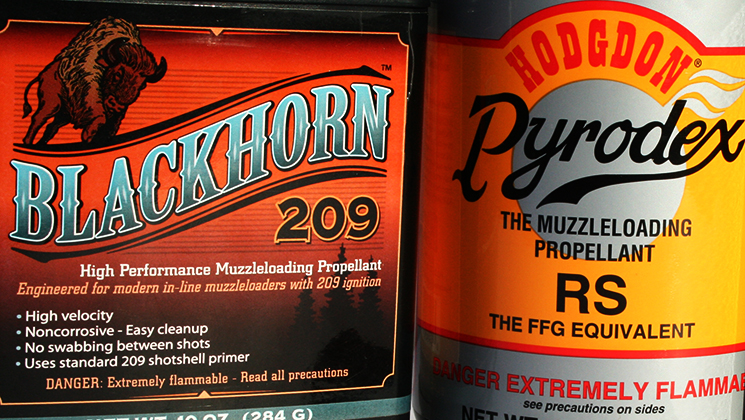
Black Powder Substitutes
Few inline muzzleloader hunters today venture into the realm of black powder—and for good reason. Black powder substitutes—which are not classified as “explosive,” but rather fast-burning “smokeless powder” (i.e. propellant)—offer many of the benefits of the elder without most of the detractions. These vary depending on the specific product. For example, the original black powder replacement, Pyrodex, gives a boost in external ballistics when compared to identical black powder charges; however, since it contains sulfur, the same post-shot stink is present. Pyrodex is slightly more difficult to ignite than black powder, but it can still be employed in same muzzleloaders. Pyrodex is somewhat hygroscopic, as well as corrosive—don’t clean your muzzleloader in a timely manner and it’ll rust for sure. Soap and water will remove any Pyrodex residue.
While Pyrodex RS continues to occupy a sizable portion of retailers’ shelves, as is especially evident by the heavily discounted prices of the numerous leftovers come the end of hunting season. Many muzzleloader hunters have made the switch to the newer substitutes. Hodgdon Triple-Se7en was the first such new-generation propellant. Not only did Triple-Se7en offer improved external ballistics, but the rotten-egg smell was jettisoned, too; in fact, that was a major marketing point for Hodgdon. It’s still highlighted on the label. Since that propellant debuted, many other powders have emerged. Today, there are several options outside of Hodgdon Triple-Se7en, such as Alliant Black MZ (now discontinued, but still can be found for sale), Accurate BlackHorn 209 and American Pioneer Powder (APP).
Alliant Black MZ is among my favorites, and I’m sad to see it go. Manufactured by APP to Alliant’s specifications, Black MZ has a lot to offer—good efficiency (i.e. external ballistics for a given charge) and shot-to-shot consistency (think accuracy), simple, stink-free, water-soap clean up, easy ignition (can be ignited by my No. 11 percussion caps), it’s non-hygroscopic, has very minimal corrosiveness and is reasonably.
Accurate BlackHorn 209 has many of the same attributes as Alliant Black MZ and then some. Per a given charge, BlackHorn 209 will provide the highest velocities of all black powder replacements. It’s also consistent in granule size for precise measuring, as well as leaves minimal, non-corrosive residue. This eases the cleaning process and negates swabbing between shots. Subsequent loading is easygoing. It’s also minimally hygroscopic, and the shelf life of the product is consistent with smokeless propellants without clumping. But there are a couple things to consider before purchasing BlackHorn 209.
First, your muzzleloader must have a breechplug with an enclosed 209 primer. Most new muzzleloaders do, though. Next, you’ll need to use standard 209 shotshell primers for ignition, forego muzzleloader-specific primers. According to Accurate, also incompatible are No. 11 percussion caps, musket caps and rifle/pistol primers. You cannot exceed a 120-grain charge, either, though you really don’t need to. Oil-based cleaners, such as those used on your modern firearm, are used to clean BlackHorn 209, not water. Lastly, a 10 oz. container of BlackHorn 209 will cost you around 10 dollars more than a full pound of the other black powder replacements. Many muzzleloader shooters and hunters believe the cost is justified.
Pros: Superb external ballistics; Consistent; Accurate; Easy to clean; Low residue; No smell (except Pyrodex); Easier to purchase; Less corrosive (except Pyrodex).
Cons: More expensive; Muzzleloader specific (BlackHorn 209)
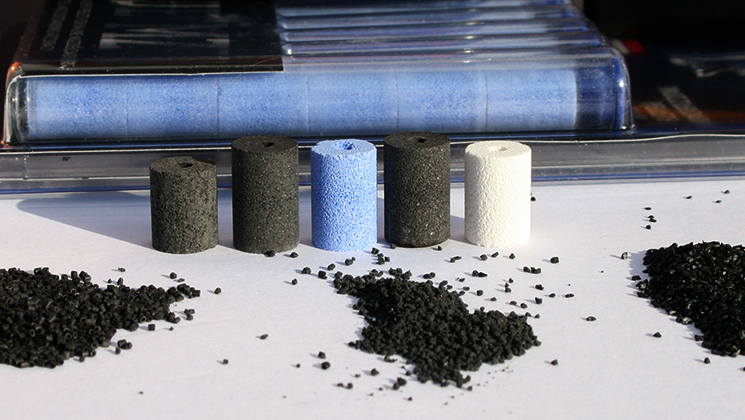
Pelletized Powder
Ease of convenience is what sells pelletized black powder replacements. The process cannot be simpler—drop the pellet(s) in the barrel, firmly seat a bullet atop and then add the ignition source. Done! There’s no powder to measure or spill. Sounds great, right? Sure, but are you getting peak performance from your muzzleloader?
Unlike the aforementioned loose powder, pellets offer minimal load customization. With regard to accuracy, you get what you get—your gun will shine or be “so-so.” Fact is, many muzzleloader hunters are okay with “so-so” performance. By purchasing 30- and 50-grain/vol.-equivalent .50 caliber pellets, you can venture beyond the utilitarian 100-grain/vol. load. But, outside of online outlets, finding those 30-grain/vol., .50 caliber pellets is quite difficult. Loose powder offers the muzzle hunter far better load customization options, and thus performance.
Pelletized powder has many of the same advantages and disadvantages of loose powder. Since ignition on most new inline muzzleloaders is the ubiquitous 209 shotshell primer, lighting off pellets isn’t a problem. But for older No. 11 percussion cap models, such as original, unaltered Knight Rifles, Pyrodex pellets are the best choice. Why? Featuring a ring of black powder on their base, the pellets are easily ignited by No. 11 caps. By using them, though, you’ll be rewarded with the consequences of black powder and Pyrodex outlined earlier.
Choices of pelletized powder include Hodgdon Pyrodex, Triple-Se7en and Triple-Se7en Magnum, IMR White Hots and Alliant’s new Blue-MZ—a replacement for the discontinued Black MZ.
Pros: Same as Above
Cons: Same as Above
As big-game hunting seasons are winding down in most states, it’s time to look ahead to next year. That leaves you plenty of time to experiment. What will be your muzzleloader’s “go juice”?












